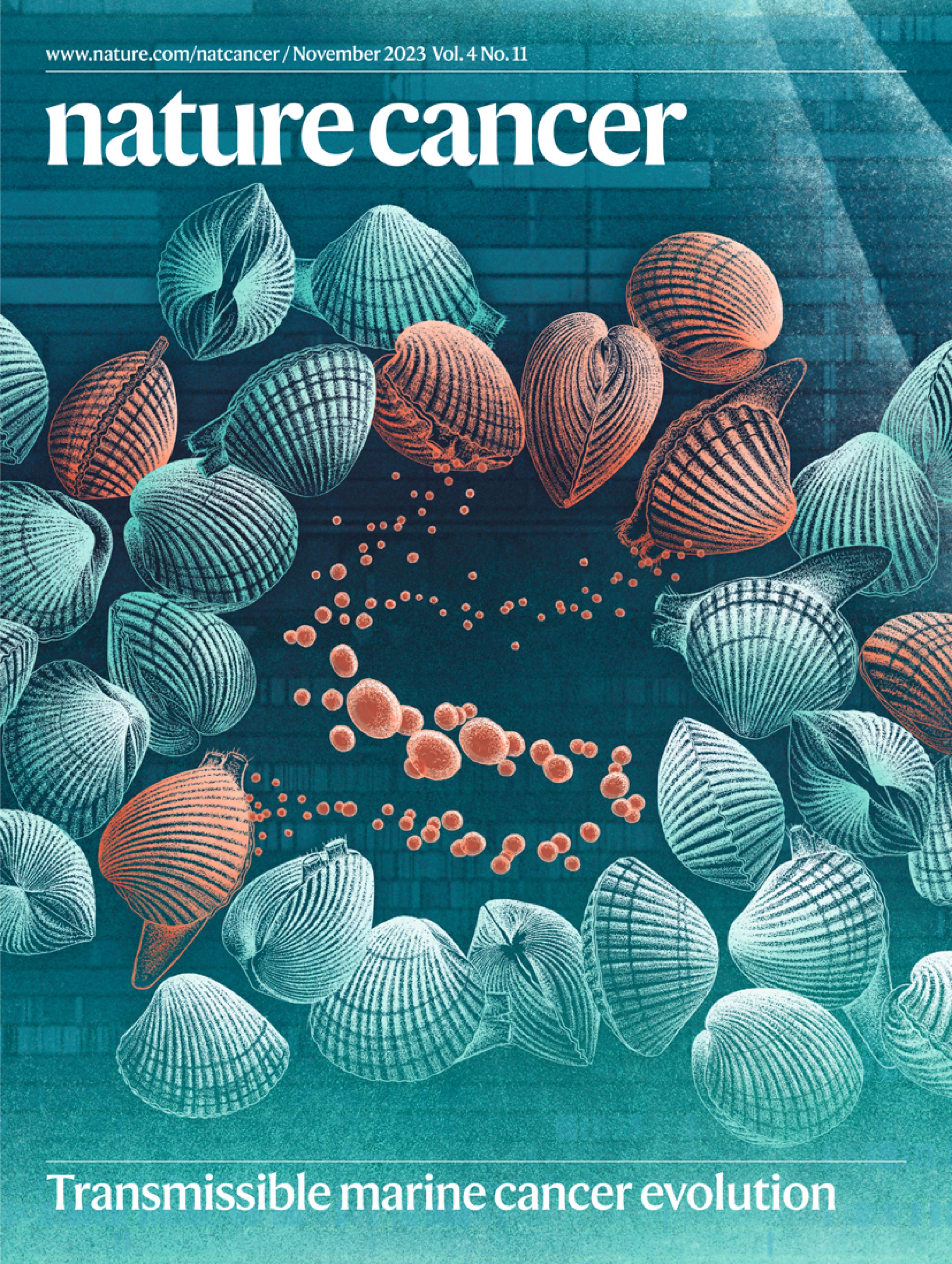Somatic evolution of marine transmissible leukemias in the common cockle
Published in Nature Cancer, 2023
Recommended citation: Bruzos AL, et al. (2023). "Somatic evolution of marine transmissible leukemias in the common cockle, Cerastoderma edule." Nature Cancer: 4, 1575–1591. doi: https://doi.org/10.1038/s43018-023-00641-9 - JIF(2022) = 22.07 - Journal JCR Category (2022) = D1 (11/317) https://doi.org/10.1038/s43018-023-00641-9

Complete Citation:
Bruzos AL, Santamarina M, García-Souto D, Díaz S, Rocha S, Zamora J, Lee Y, Viña-Feás A, Quail MA, Otero I, Pequeño A, Temes J, Rodriguez-Castro J, Aramburu L, Vidal A, Villanueva A, Costas D,Rodríguez R, Prieto T, Tomás L, Alvariño P, Alonso J, Cao A, Iglesias D, Carballal MJ, Amaral AM, Balseiro P, Calado R, El Khalfi B, Izagirre U, Montaudouin X, Pade NG, Probert I, Ricardo F, Ruiz P, Skazina M, Smolarz K, Pasantes JJ, Villalba A, Ning Z, Ju YS, Posada D, Demeulemeester J, Baez-Ortega A, Tubio JMC. “Somatic evolution of marine transmissible leukemias in the common cockle, Cerastoderma edule.” Nature Cancer 4, 1575–1591 (2023). doi: https://doi.org/10.1038/s43018-023-00641-9
Previously published on Biorxiv.
IF(2022) = 22.07
About the paper:
Scope: This article describes the main scientific results from the analysis of approximately 500 cockle genomes to understand the evolutionary history of two lineages of leukemia-like cancers transmitted among cockle populations. We discovered extensive genome instability, horizontal transfer of mitochondria, the ontogeny of two cancer lineages, complete genome duplication, co-infections, lineage-specific signatures and much more. Impact: This research offers unprecedented insights into marine contagious cancers. Understanding the origins and evolution of cockle transmissible cancers, and how their cells interact with cockle cells and the marine environment, could help protect animal populations while providing insight into how cancers can metastasize on different species and survive for thousands of years as parasites. My contribution: I was involved in all the experiments, analysis, and discussions that gave rise to this article, in fact, it comprises two chapters of my doctoral thesis. Personal importance: This is the most important publication of my career so far because it encompasses the results of six years of research. So, it’s an honour that it was published in a high-impact journal that rarely publishes research on non-model species. Even more, this publication was featured on the cover of the issue.
- Read here a Behind the paper blog post summarizing the main findings.
- Watch a 3-min video here about the ERC-StG project that funded this research.
- Tweetorial Tubio lab
- Tweetorial Metzger lab
More information:
Download paper here
Do not hesitate to reach out to discuss the results.
Authorship:
Position of AL Bruzos: 1 (first authorship)
Total number of authors: 45
Authors: Bruzos AL; Santamarina M; García-Souto D; Díaz S; Rocha S; Zamora J; Lee Y; Viña-Feás A; Quail MA; Otero I; Pequeño A; Temes J; Rodriguez-Castro J; Aramburu L; Vidal A; Villanueva A; Costas D;Rodríguez R; Prieto T; Tomás L; Alvariño P; Alonso J; Cao A; Iglesias D; Carballal MJ; Amaral AM; Balseiro P; Calado R; El Khalfi B; Izagirre U; Montaudouin X; Pade NG; Probert I; Ricardo F; Ruiz P; Skazina M; Smolarz K; Pasantes JJ; Villalba A; Ning Z; Ju YS; Posada D; Demeulemeester J; Baez-Ortega A; Tubio JMC.
Journal information
ISSN / eISSN: 2662-1347
Current Publisher: NATURE PORTFOLIO, HEIDELBERGER PLATZ 3, BERLIN, Germany, 14197
Journal Impact Factor (JIF): 23.177 (2023)
WoS Research Areas: Oncology
JCR Category: ONCOLOGY - SCIE
JCR Category Rank: 12/241
JCR Category Quartile: Q1 (11/317)
Peer-review process:
Received: 22 November 2022
Accepted: 23 August 2023
Published: 02 October 2023
Journal cover:

